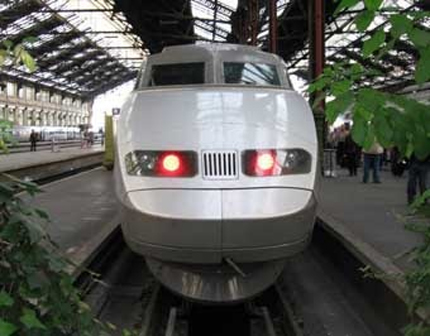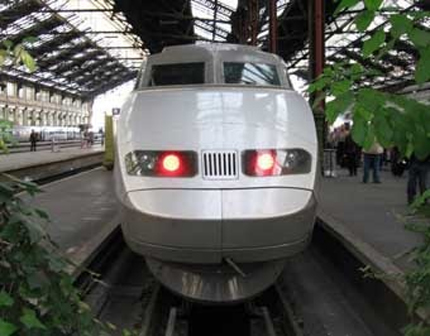Choosing this opportunity means integrating with the Italian railway transport development plan, even though, in reality, we should talk about two plans: one concerning the Ventimiglia-Genoa line, which in 2018 will allow the two terminals to be connected in 1 hour (compared to the current 2 hours and 30 minutes due to a single track) and the TAV line (equivalent to the TGV) which in 2020 will allow travelers to go from Genoa to Milan in 45 minutes to 1 hour (currently, it takes 1 hour and 30 minutes with Intercity). Overall, the travel time between Ventimiglia and Milan should not exceed 2 hours.

Disappointed by the opacity and the slowness of the decision-making process regarding the TGV link between Nice and Paris (via Aix?, via Marseille-Toulon?) which is practically blocked and whose costs keep increasing, thus causing a negative spiral. This has forced a revision of forecasts, postponing them from 2025 to 2035!!!
However, it’s well known that improving access to Nice and its connection to the major European axes of mobility for people and goods will be one of the key factors for its economic development… Thus, the mayor of Nice changed the game (as poker players would say) and played his joker: the alliance with Genoa, thus connecting to the corridor No. 5 of the fast transports planned by the European Community master plan (Lisbon-Kiev, which passes through France via Marseille and Lyon to continue on Italian soil through Turin, Milan, and Venice).
The stake is strategic because, even though the reverse connection, the one towards Barcelona via Marseille, remains a point to be resolved and… must be resolved! With this option, Nice will be linked via the Milanese stopover to Italy’s richest region, Lombardy, and will have facilitated access to economic zones considered among the economic engines of Europe: Switzerland and Germany via the Gothard tunnel, Austria and Bavaria via Verona and the Brenner tunnel, and Eastern Europe via Venice. This allows us to imagine a promising improvement in exchanges and even an integration of businesses from the French Riviera with powerful economic zones.
Can this pro-European choice that turns its back on a more national option be criticized? Yes, of course, and we report the comment of Patrick Allemand, head of the opposition in the Municipal Council.
The response was given by the mayor of Nice himself: “Marseille turned its back on us, so we accepted the hand extended by Genoa.”
It’s up to the mayor of Nice to realize ‘his’ project: an HGV line between Nice and Ventimiglia with an intermediate point in Monaco, the most Italian city on the French Riviera, which has already given its consent. Considering the 30 km that separate Nice from Ventimiglia, this should reduce the total time between Nice and Milan to about 2 hours and 30 minutes, instead of the officially announced 3 hours and 30 minutes, perhaps due to confusion between the two languages (even though the figures…) during the press conference preceding the signing of the letter of intent between the municipalities of Nice and Genoa, which aims to lead, in the near future, to a strategic partnership (with an intention to extend activities to airports and ports while universities are already collaborating within the framework of the PRES*) between those that, with emphasis, Christian Estrosi has already called the cities of the future Metropolitan Latin Community!
Is there utopia in all this? Certainly.
But the future demands an extra supply of vision and imagination. And don’t they say that… “salvation is not in the material, you have to believe in the invisible?”
- Status of relations and collaborations between the University of Nice Sophia Antipolis (UNS) and the University of Genoa (UniGE)
The UNS and UniGE have been forging solid and readable collaborations for many years in the fields of education and research. UNS and UniGE are two among the six founding and partner institutions of the ‘Euro-Mediterranean PRES’, the transboundary Higher Education and Research Cluster that also includes the Universities of Turin, Pierre-et-Marie-Curie (Paris VI), South Toulon-Var, and Corsica.
The convention establishing the PRES was ratified at UNS in February 2008. With their partners, UNS and UniGE have committed to creating the future ‘GECT Euro-Mediterranean Campus’ with the objectives (i) of creating a well-recognizable top-tier higher education and research cluster at the heart of the Euroregion Alps-Mediterranean and (ii) of strengthening the governance of shared inventiveness and strategic vision, thus building a policy of scientific cohesion.


